The Best Cheeses for Your Holiday Parties, According to Cheesemongers
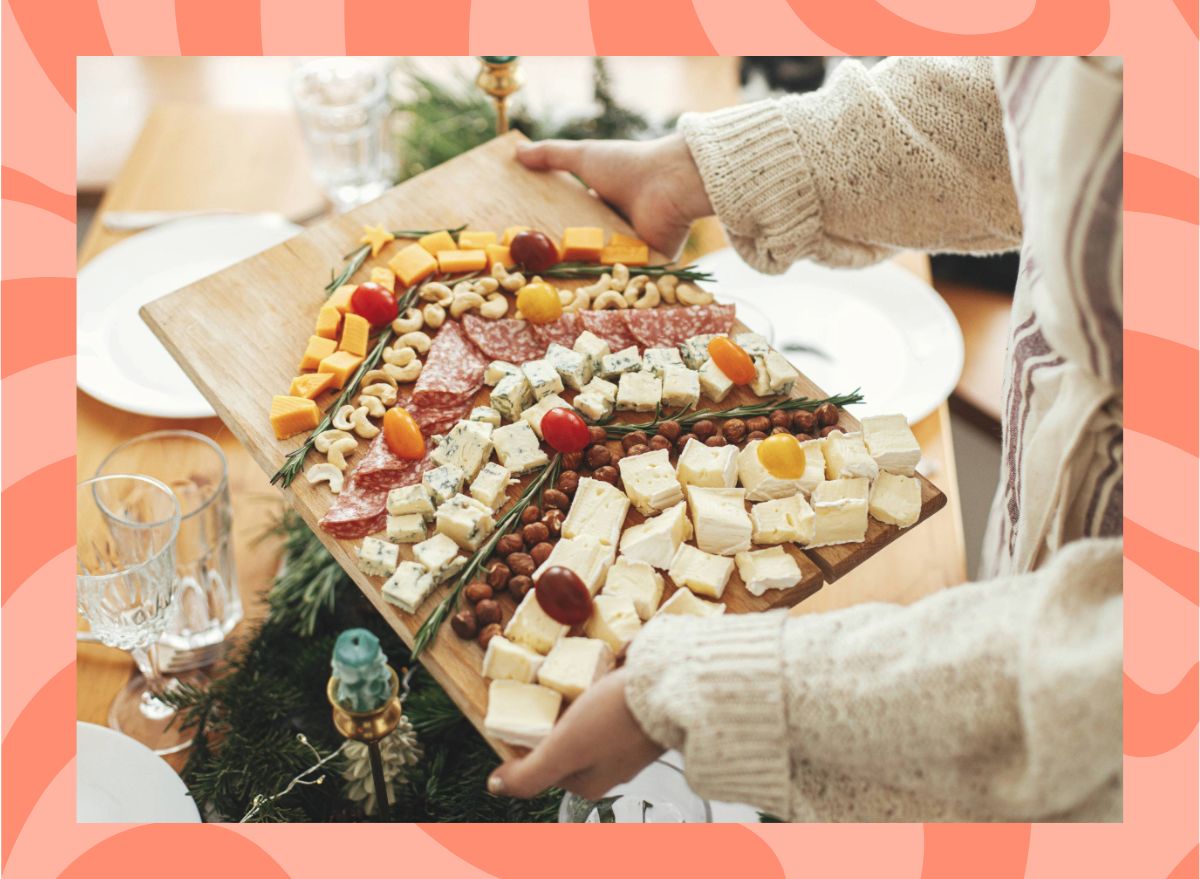
Delicious food is a key component to a memorable holiday party, and one usual suspect is the beloved cheese board that guests often pick on throughout the night. However, arranging an impressive holiday cheese board calls for more than just throwing together some cheese, crackers, cured meat, and fruit. You'll also want to take the seasons into account.
"Seasonality is a bigger part of cheese than most people think," says Scott Evans, a domestic cheese buyer and cheesemonger at Zingerman's Deli in Ann Arbor, Mich. "Modern grocery makes it feel like everything is available all at once, but at [its] core, cheese is still deeply tied to agriculture, and agriculture is inherently seasonal."
For instance, Evans says goat milk cheeses "are still very tied to spring and summer," thanks to their light, bright flavors that complement the dishes of those seasons. However, goat cheese can still be a welcome addition during colder months.
"Fall and winter are more linked with the stronger, richer flavors of more aged cow's milk cheese. Aged cheese is the best way to preserve the bountiful dairy that comes from the grass-filled warmer months into the winter, [when] food was historically much scarcer," he added.
To help you plan your cheese lineup this holiday season, we consulted several cheesemongers who shared their top recommendations, along with some pairing suggestions. Here are some of the best cheeses to enjoy during your holiday parties this year.
Raclette
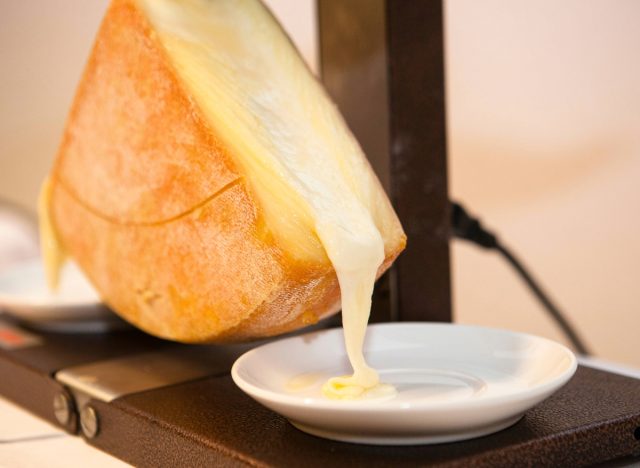
Alpine cheeses, also referred to as "mountain cheeses," are made with unpasteurized cow's milk and cover a range of Swiss, French, Austrian, and Italian varieties made in the Alps, according to The Spruce Eats. Of the many Alpine options, raclette, a semi-hard cheese from the Alpine regions of Switzerland and France, is one you'll want to have on your radar, according to Molly Browne, cheesemonger and education director for the Dairy Farmers of Wisconsin and Wisconsin Cheese.
"The cheese has a smooth, creamy texture that melts easily, making it ideal for the traditional Swiss dish also called 'raclette,' where the cheese is heated and scraped over potatoes, roasted veggies, cured meats, pickles, and other accompaniments," Browne says. "It's a great cheese for fondue and melting dishes, and perfect for the colder holiday months."
Her personal favorite is the Mount Raclette from Alpinage Cheese in Oak Creek, Wis. This variety is a Wisconsin twist on a popular French and Swiss mountain cheese, and is made in small batches with farmstead raw milk.
Evans echoes a similar sentiment. "Being able to melt cheese over whatever winter vegetables you have lying around and call it dinner is truly a gift," he says.
Comté and Gruyere

In addition to raclette, consider consider picking up two other Alpine cheeses: comté, a semi-hard French cheese, and gruyère, a hard Swiss cheese.
"Mountain cheeses like comtée or gruyère fit the mood for me and are universally liked by all age groups because they are nutty and rich and slightly sweet with lingering flavors that remind you of French onion soup—at least to me," says Brad Hedeman, head of marketing and product selection at Zingerman's Mail Order.
He recommends pairing both options with apples, pears, crusty bread, salami, mustard, and honey for drizzling.
Manchego, Cheddar, and Gouda
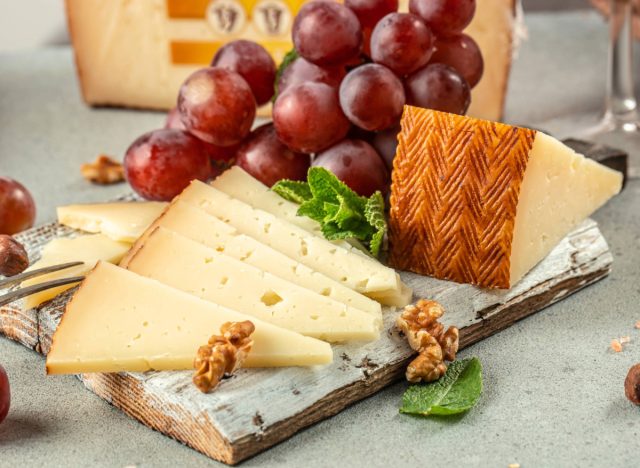
Tessie Ives-Wilson, deli events coordinator at Zingerman's Deli, finds herself opting for hard cheeses that have body and acidity to pair with the season's produce.
Some examples she recommends include "mineral-forward Spanish sheep's milk cheeses like Manchego," which complement roasted delicata squash, "grassy English cheddars that go toe-to-toe with a crisp Braeburn apple," and "aged gouda that brings caramelized sugar notes to a party with hearty greens like kale, Brussels sprouts, and other cabbages."
Meanwhile, John Montez likes to have a big chunk of clothbound cheddar on hand during the fall and winter. According to the training and curriculum manager at New York City's Murray Cheese, this cheese, which is coated with lard or butter and wrapped in cotton bandages, is "more earthy and crumbly than block cheddars."
Says Montez, "The English make them grassy and musty; the Welsh make them horseradishy and sharp. Ones made in the United States are often nutty with a bit of a tropical fruit sweetness."
Goat Cheese
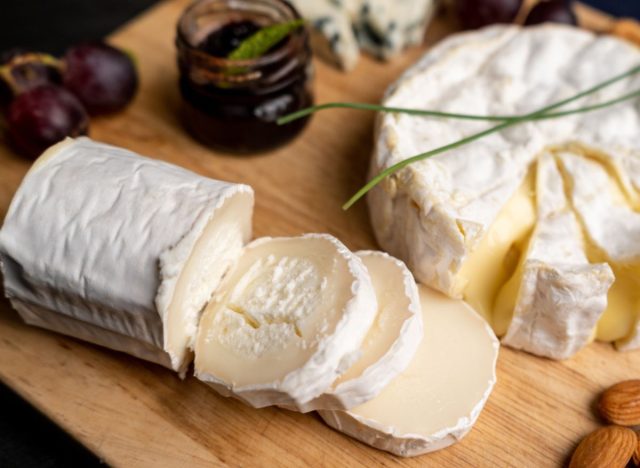
"If Alpines represent the rustic side, soft aged goat's milk cheeses represent the elegant side," Montez says. "Plus, we need something soft to wash down all the Champagne!"
One of his favorite goat cheese options is the Bijou from Vermont Creamery. This button-shaped option comes in packs of two and "taste[s] like a savory lemon cheesecake," he says, adding that it's "perfect" with a wintery white wine like Apremont.
Kara Young, community manager at Vermont Creamery, is also a fan of goat cheese during the fall. She highlights fresh chèvre, a pasteurized goat cheese known for its creamy texture and tangy flavor. According to Young, this option pairs well with earthy flavors and fall ingredients, such as squash, apples, pecans, pumpkins, and figs.
"Due to changes in goats' diets, goat cheese is typically richer and heartier during the fall and is an excellent addition to fall favorites like a roasted vegetable salad or creamy pasta," Young says.
Upland's Rush Creek Reserve
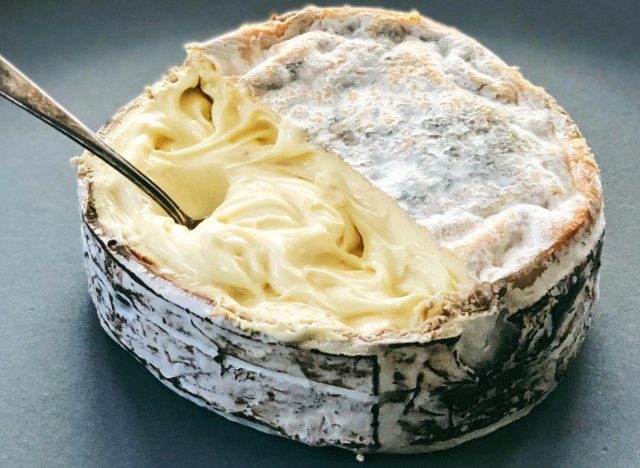
Exclusively produced in the fall, this Wisconsin-made cheese is wrapped in spruce bark, which provides subtle woodsy notes. Browne describes the flavor profile as "bacon-infused custard," adding, "It's a bit like sitting by a bonfire in a pine forest on a brisk evening and pairs perfectly with any warming tipple you may have on hand."
While the cheesemonger says you can serve this cheese with "pretty much anything," she loves to include "offbeat pairings," such as kimchi, tater tots, and maple bacon.
Meanwhile, for Hedeman, serving this cheese with bread is essential.
"Get something crusty with a good crumb that can be used to scoop and slather if necessary," he says. "You'll be scooping this cheese out, so you'll need somewhere soft and chewy for it to land."
Blue Cheese
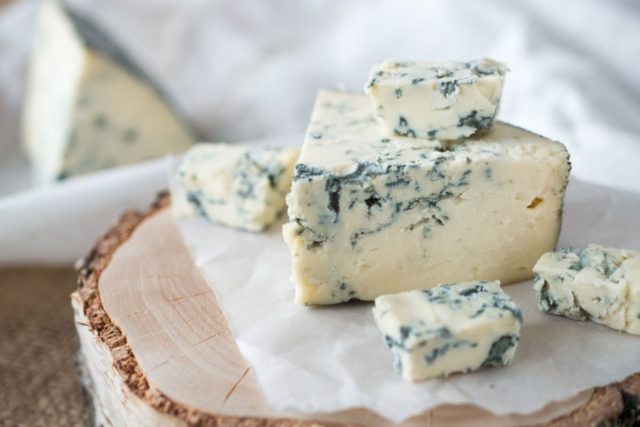
Known for its pungent aroma and distinctive blue spots, blue cheese is made with cultures of the mold, penicillium roqueforti. A few examples include gorgonzola, Roquefort, and Stilton.
"Blue cheese is a perfect addition to any holiday gathering, and will provide bold and complex flavors that are a standout addition to festive meals," Browne says. "The rich texture and tangy, savory notes pair well with a variety of holiday foods, from roasted meats to seasonal fruits like pears, apples, and grapes."
One option she recommends is the Blue Jay from Wisconsin's Deer Creek Cheese. This cheese is infused with juniper berries and features "piney, herbal notes" that she says "will remind you of a Christmas tree."
Hedeman also recommends going for blue cheese this holiday season, calling Stilton "the cheese of Christmas." This option has a smooth, rich, and sometimes sweet flavor, which he recommends pairing with port wine and toasted nuts, such as walnuts. "Drizzle honey over a bite of blue cheese. It's a revelation," Hedeman adds.
Cheeses with a Kick
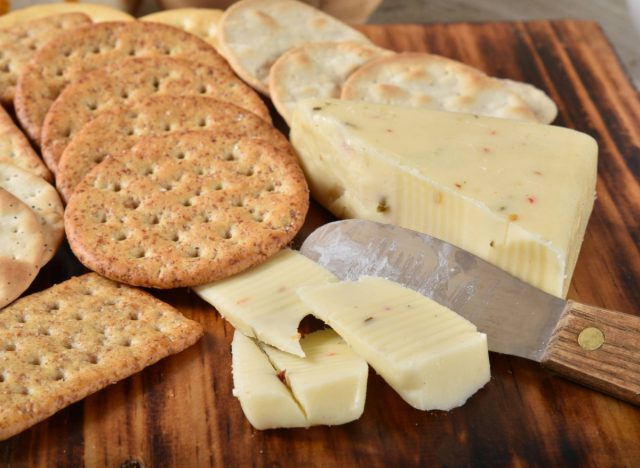
During the holiday season, you'll not only want to turn up the heat in your home, but also on your cheese board. If you're a fan of spicy cheese, Browne suggests habanero Jack, which she says pairs well with crackers or sausage as an appetizer. For a cozy grilled cheese or mac and cheese dish, opt for Havarti with dill or jalapeño, while chipotle gouda complements baked sweet potatoes and other vegetable dishes, she says. Making chili this season? Browne says tandoori gouda is a "great addition."
Parmigiano Reggiano
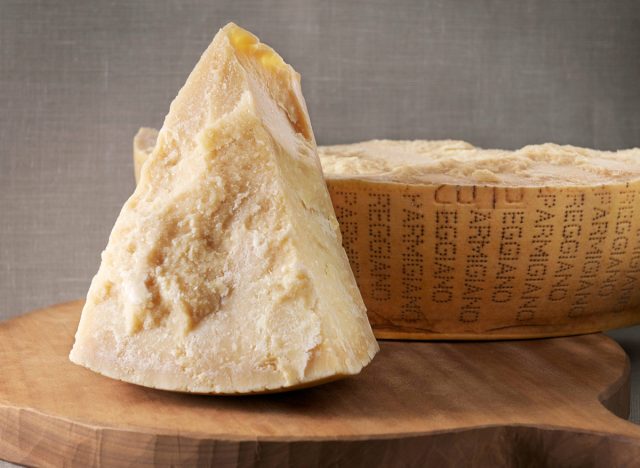
It's no secret that Parmigiano Reggiano is a popular cheese, but did you know it's especially appealing during colder months? When figuring out what to pair it with, you'll want to consider the time it spent aging.
For instance, a 14-to-18-month-aged Parmigiano Reggiano is "lovely when combined as an aperitif with dry white wines or fresh fruit, such as pears and apples," says Michele Casadei Massari, executive chef of Lucciola in New York City. He says the cheese also "excels in melting applications," such as gratins, pizzas, and creamy dishes like polenta.
Meanwhile, a 24-to-30-month aged Parmigiano Reggiano is known for its "ability to seamlessly integrate into various dishes, from soups to pasta," according to Massari. The chef says the cheese's nutty aroma and solubility "make it a fantastic addition to risottos," though it also "works beautifully in unique desserts like a cheesecake, imparting a rich, savory undertone."
If you're a red wine lover, Massari notes that a 36-month-aged Parmigiano Reggiano "pairs well with a range of drinks, namely full-bodied red wines like Barolo or Barbaresco." For something extra cozy, he says a brodo (broth) made with this cheese rind is a "game-changer" and can infuse soups and stews with a "rich, umami-packed flavor."









